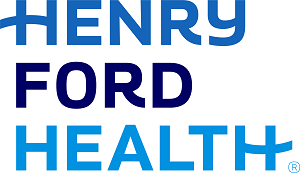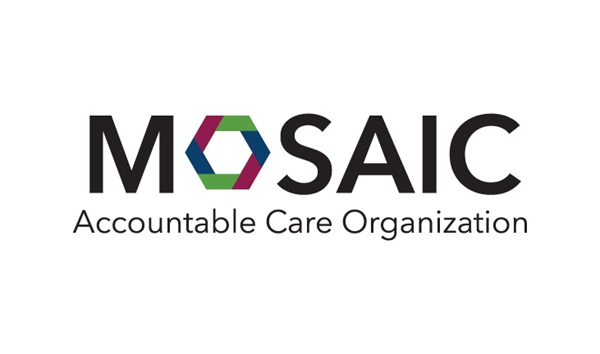Rehab Services Go Virtual to Fill the COVID-19 Treatment Gap
Virtual Visits Keep Rehab Patients on Track to Recovery
DETROIT – Henry Ford Health System’s Rehabilitation Services have gone virtual to connect with patients who need to continue their rehab at home during the restrictions brought on by the COVID-19 pandemic. Since starting Virtual Visits a month ago, more than 240 sessions have been conducted.
“The visits are going well,” said Kathy Neckrock who oversees Henry Ford Hospital and Henry Ford Medical Group’s inpatient and outpatient rehab services locations. Her team of physical and occupational therapists work with a variety of patients requiring specific treatment approaches. “These are time sensitive patients who can’t physically get in or felt uncomfortable coming in due to the COVID-19 situation,” she said.
Patients are using the virtual option to continue therapy to manage pain and help maintain movement and function. Many are recovering from surgery done just prior to the COVID-19 pandemic that forced stay at home orders. Some therapy needs are helping post-operative patients who are waiting for follow-up medical procedures to have pins removed and other similar needs.
“We have had therapists available in some of our out-patient clinics throughout the pandemic; to treat the patients that require a hands-on approach,” Neckrock explains. “There are a lot of patients that can be treated very effectively with Virtual Visits, including balance disorders, orthopedic conditions and other movement impairment”. She added another bonus is it assists those with transportation challenges during this difficult time.
Both providers and patients have adapted quickly to Virtual Visits. Providers have helped patients find places in their homes best suited for the therapy sessions, therapy exercises that don’t require equipment found in the clinics, and how to use technology available to conduct the sessions.
Virtual Visits will continue to play an important role for the System’s rehab services even after clinics are open again since limitations such as social distancing and higher-risk patients will still exist.
Also known as Video Visits, scheduling a virtual visit is easily done through a patient’s active MyChart account.
To schedule, patients must have an order from their physician. “A good number of patients have had telehealth visits with their providers who then prescribe the occupational/physical therapy session. The virtual therapy visit is created in the same way as with the provider and appears on the patient’s MyChart account,” Neckrock said. Patients must have an internet-connected device with a working webcam and microphone in order to engage in a Video Visit. They can use any mobile device, desktop or laptop computer equipped with a camera. The service is optimized for use with smartphones and tablets (both Android and Apple devices). For desktop users, they must have either Chrome or Internet Explorer as their web browser.
“What’s nice is there are visuals,” said David Tomsich who is the director of Sports Rehab Services and Physical Therapy at the Henry Ford Center for Athletic Medicine. “All these in the past have been over the phone so virtual visits have improved treatment.”
The ability for the therapist to see the patient go through the rehab exercises real time is the next best thing to being there in person. The biggest challenge for physical therapists doing Virtual Visits is the inability to put their hands on patients as they work through manual treatment with them, “I’ve had to be more creative with what I’m doing with patients,” said Nancy Houze, a physical therapist with Henry Ford Health System who has seven years of experience but has only worked with Virtual Visits for the past three weeks. “I will have the patient work on themselves by doing self-massage or using foam rollers or other soft tissue tools to help work on themselves to loosen tissue,” she said.
Houze explains that patients don’t need any of the therapy equipment used at the facility in order to take part in Virtual Visits from home, “We just work on using body weight resistance for exercises, so if it’s for a lower extremity we will work on doing squats and calf raises – things that are more body weight focused.” She added that for upper body extremities, she will have patients use the ground as a form of resistance or have them do active range of motion exercises.
The response to doing Virtual Visits has been very positive from Houze’s patients, “My patients love them. I think they like that they’re able to see me and work with me even though they can’t come to the clinic at this time,” she said.
Kait Harbour is one of Houze’s physical therapy patients who is recovering from surgery after sustaining an injury during her first skiing vacation in British Columbia in late January, “I tore my MCL, ACL and meniscus in quite a dramatic silly fashion,” Harbour said. As a former college athlete and first-time skier, she never left the bunny hill and ruined her vacation on the first day. After having surgery on March 9, she opted for a combination for in-person and Virtual Visits to continue her rehab during the COVID-19 restrictions.
“Early on when I heard that video sessions were available, I was a little bit skeptical,” admitted Harbour. But once she learned that Virtual Visits offer the same level of feedback and correction from the convenience of her home, she forged on with her rehab. Harbour normally travels internationally for her job about 50 percent of the time and if the current pandemic didn’t exist, and she was still traveling for work, she thinks that Virtual Visits would be her primary form of rehab care. She also enjoys the convenience of not having to wear a face mask when doing rehab exercises at home.
Tomsich describes the variety of patients who are taking advantage of the Virtual Visits are those who are focused on maintaining progress and not regressing in their rehab programs. “Some are recovering from anterior cruciate ligament injuries, which is a long process, and they want to keep getting stronger and not have to recover for a longer period of time,” he said.
Tomsich explains that the Virtual Visits were started because some patients were uncomfortable coming to the clinic due to the pandemic situation, “This option provided an outlet where they could still receive their care, good care, and not have to take a risk for their health because maybe they had some issues themselves where they were at greater risk or they just wanted to be safe or keep family members safe,” he said. He added that since the start of the pandemic he and his team have made a number of changes in terms of how they run the clinic and how they keep it clean. The safeguards put in place to ensure that patients and staff are safe include social distancing, face masks are worn by patients and staff, and everything that is touched is cleaned immediately,
For instance, following an ACL surgery, it’s crucial for patients to meet their goals in terms of their range of motion and strength targets so that they can start walking normally again, “Post-ACL it is very common for patients to compensate how they move. They move different than they should and these compensations typically don’t go away on their own,” said Tomsich. Getting the timely therapy is critical to restoring normal movements and allows patients to get back to their activities with less risk of reinjury.
Tomsich’s team is seeing a wide variety of patients through Virtual Visits, from spine injuries to knee surgeries to ankle and foot injuries, his team is taking care of the entire body. “With video visits, we have expanded our capabilities where we can provide care,” The video aspect has allowed him and his team to see patients who live two or three hours away and were previously limited in the number of visits during their recovery. Through Virtual Visits, the team has been able to visually reassess the progress more often.
Virtual Visits has also helped Tomsich and his team better understand the options patients have at home for doing their exercises, “What equipment they have or don’t have and we have had to be very creative and adaptable to have the patient use what they have at home to help them get better,” Tomsich said.
###
MEDIA CONTACT: Sal Giacona / sgiacon1@hfhs.org / 313-421-9108
.svg?iar=0&hash=F6049510E33E4E6D8196C26CCC0A64A4)

/hfh-logo-main--white.svg?iar=0&hash=ED491CBFADFB7670FAE94559C98D7798)






